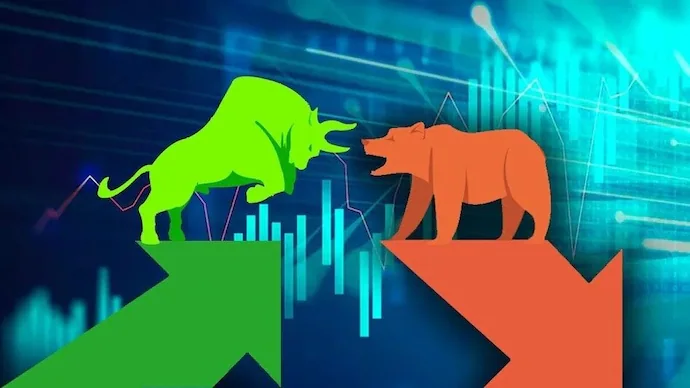In the dynamic world of finance, few terms are as commonly used, yet sometimes as misunderstood, as “bull market” and “bear market.” These aren’t just colorful metaphors; they represent fundamental states of the stock market that significantly influence investor sentiment, strategic decisions, and the overall economic outlook. For any investor, from novice to veteran, a clear understanding of what defines these market conditions, how they behave, and crucially, how to navigate them, is essential for long-term success.
This guide will demystify bull and bear markets, providing insights into their characteristics, historical context, and the practical implications for your investment portfolio.
The Animal Kingdom Metaphor: Bull vs. Bear
The origin of these terms is often debated, but the most popular explanation relates to how each animal attacks:
- Bull Market: A bull attacks by thrusting its horns upwards. This upward motion symbolizes rising stock prices.
- Bear Market: A bear attacks by swiping its paws downwards. This downward motion symbolizes falling stock prices.
These metaphors effectively capture the prevailing direction and sentiment of the broader market.
Defining a Bull Market: Optimism and Growth
A bull market is characterized by a sustained period of rising stock prices. While there’s no official, universally agreed-upon threshold, it’s generally defined by:
- Rising Prices: A significant and sustained increase in the value of securities (stocks) across the market. Often, this is signaled by a rise of 20% or more from a recent low in a broad market index like the S&P 500 or Dow Jones Industrial Average.
- Positive Investor Sentiment: Investors are generally optimistic, confident, and willing to take on more risk. There’s a prevailing belief that prices will continue to rise.
- Strong Economic Indicators: Bull markets typically coincide with, or are driven by, robust economic growth, low unemployment, strong corporate earnings, and increasing consumer confidence.
- High Demand for Stocks: More investors are buying than selling, pushing prices higher.
- Easy Access to Capital: Interest rates are typically low, making it cheaper for companies to borrow and expand, and for investors to finance purchases.
How to Spot It (and What to Do): Identifying a bull market in real-time can be challenging, as minor corrections (dips) are normal even within an uptrend. However, consistent new highs in major indices, positive economic data, and general investor enthusiasm are strong indicators.
- For Investors: Bull markets are generally favorable. They reward investors who maintain a long-term perspective and continue to invest. While it’s tempting to try and time the market, consistent contributions (Dollar-Cost Averaging) and sticking to your long-term asset allocation strategy are usually the best approach. Growth stocks often thrive in bull markets.
Historical Context: Bull markets can last for several years, sometimes even over a decade. Examples include the bull market of the 1990s (dot-com boom) and the lengthy period from 2009 to early 2020 following the Global Financial Crisis.
Defining a Bear Market: Pessimism and Contraction
A bear market is the opposite: a sustained period of falling stock prices. Like its bullish counterpart, there’s a common definition:
- Falling Prices: A significant and sustained decline in the value of securities. This is commonly defined as a fall of 20% or more from a recent peak in a broad market index.
- Negative Investor Sentiment: Investors are generally pessimistic, fearful, and risk-averse. There’s a prevailing belief that prices will continue to fall.
- Weak Economic Indicators: Bear markets often precede or coincide with economic slowdowns, recessions, rising unemployment, declining corporate earnings, and reduced consumer spending.
- Low Demand for Stocks: More investors are selling than buying, pushing prices lower.
- Tightening Capital: Interest rates may be rising or credit markets tightening, making it harder for businesses to grow.
How to Spot It (and What to Do): Bear markets can be frightening, and the urge to sell to “stop the bleeding” is strong. However, panic selling is one of the biggest mistakes an investor can make.
- For Investors: Bear markets are challenging but also present unique opportunities.
- Don’t Panic Sell: Selling during a downturn locks in losses and means you’ll miss the inevitable recovery.
- Focus on the Long-Term: Remember that bear markets are temporary. History shows that markets always recover.
- Opportunities for Value Investing: Quality companies become “cheaper.” A bear market can be an excellent time to buy solid businesses at a discount, allowing you to acquire more shares with the same investment amount.
- Rebalance: It might be an opportunity to rebalance your portfolio, selling some bonds (which often perform better in bear markets) and buying more stocks at lower prices to return to your target asset allocation.
- Consider Defensive Stocks: Companies in sectors like utilities, consumer staples, or healthcare tend to be more resilient during economic downturns.
Historical Context: Bear markets are typically shorter than bull markets, often lasting from a few months to a couple of years. Recent examples include the Dot-Com Bust (2000-2002), the Global Financial Crisis (2007-2009), and the brief but sharp COVID-19-induced bear market in early 2020.
Differentiating Bear Markets from Corrections
It’s important not to confuse a bear market with a market correction.
- Correction: A decline of 10% to 20% from a recent peak. Corrections are normal and frequent within bull markets. They are healthy adjustments that prevent markets from overheating.
- Bear Market: A decline of 20% or more, indicating a more significant and sustained downturn, often linked to broader economic weakness.
While corrections can feel unsettling, they are a regular feature of a healthy market cycle and do not necessarily signal the start of a bear market.
The Cyclical Nature of Markets
The stock market is inherently cyclical. Bull markets lead to bear markets, and bear markets eventually give way to new bull markets. This ebb and flow is driven by economic cycles, investor psychology, corporate performance, and geopolitical events.
Understanding this cyclical nature is paramount for a long-term investor:
- Embrace Volatility: Short-term volatility is normal. It’s the price you pay for the potential of long-term returns.
- Stay Invested: The biggest mistake is being out of the market during its best-performing days, which often occur during early recoveries from bear markets.
- Maintain Discipline: Stick to your investment plan, rebalance periodically, and automate your contributions.
Conclusion: Patience and Perspective Win the Race
The concepts of bull and bear markets are more than just financial jargon; they are critical lenses through which to understand market dynamics and investor behavior. Bull markets reward optimism and growth, while bear markets test patience and provide opportunities for the discerning.
For the long-term investor, the key is not to fear market cycles, but to understand them. By embracing diversification, maintaining a consistent investing strategy (like dollar-cost averaging), managing emotions, and focusing on your long-term financial goals rather than short-term fluctuations, you can navigate both the roaring bull and the clawing bear, positioning yourself for sustainable wealth creation over time. In the end, it’s not about predicting which animal is in charge, but about consistently riding the market’s long-term upward trend.




